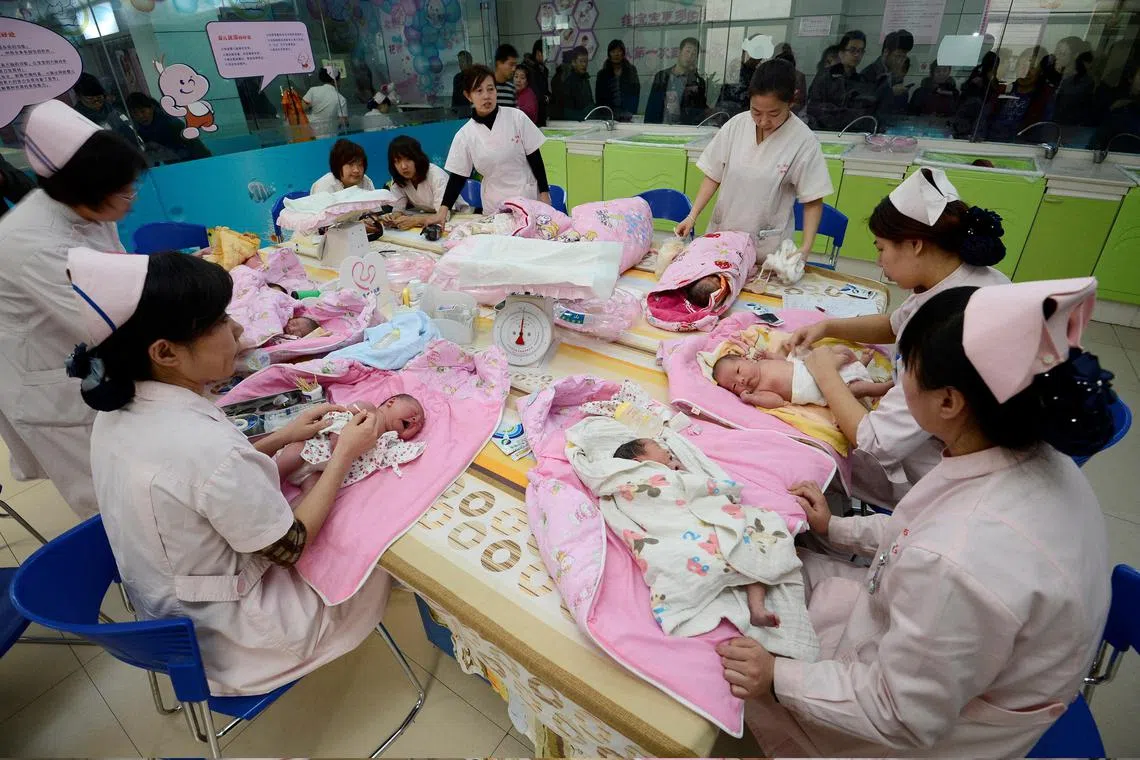China plans nationwide subsidies to boost birth rate, growth
Sign up now: Get ST's newsletters delivered to your inbox

China’s population registered a decline for three straight years through 2024.
PHOTO: REUTERS
Follow topic:
BEIJING – China is planning to offer cash handouts to families as an incentive for couples to have children, according to people familiar with the matter, as years of population decline threatens the world’s No. 2 economy.
The government is set to provide 3,600 yuan (S$640) a year for each child, born on or after Jan 1, 2025, until they turn three under a nationwide initiative.
While China abandoned its one-child policy about a decade ago, its population registered a decline for three straight years
Diminishing birth rate is a challenge for the world’s second-largest economy, where the working-age population has been shrinking in a threat to labour supply and productivity.
China, which lost its title as the most populous nation
That outlook stems from the alarming drop in marriage rates, which hit its lowest level in almost half a century and could lead to even fewer births.
The worrying trend has already prompted many local governments to roll out measures, from offering cash incentives to providing housing subsidies, to help alleviate families’ financial burden and encourage births.
Local subsidies in some cases can be quite generous. Hohhot, the regional capital of Inner Mongolia, made national headlines in March for its subsidies of 50,000 yuan to couples who have a second child and 100,000 yuan for a third or more. BLOOMBERG

